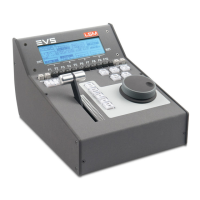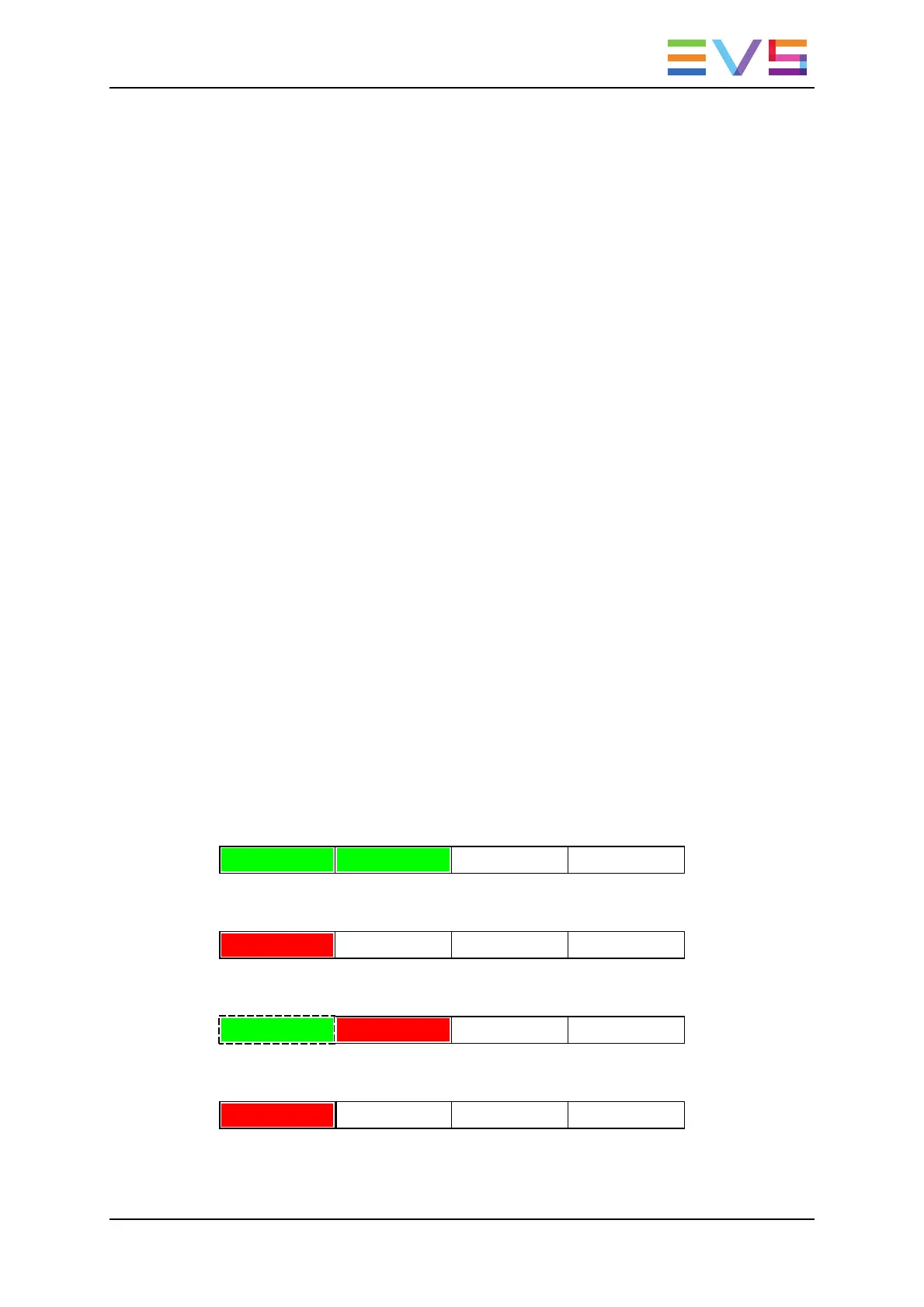• Cue points can be marked across several blocks but the recall is limited to the
currently selected block.
Example:
◦ While recording on memory block 1, mark cue points 1, 2, and 3 on memory block
1.
◦ Press TAKE to start recording on block 2 and mark cue points 1, 2, and 3.
◦ Press TAKE and select memory block 2. The Last Cue command scrolls through
the cue points of block 2.
◦ To go through cue points of another block, select that block first then press Last
Cue.
• On OSD, the first information, displayed in white, refers to the cue points on the
playing block while the second information, displayed in red, refers to the recording
block.
Memory Block Management
General Principle
On the FOR-A FT-One camera, the blocks that are freed up are moved to the left.
Therefore, we can consider that the general principle for block management is the
following:
• The recorded blocks are found in first position(s).
• The recording blocks are found after the recorded blocks.
• The empty blocks come in last position.
Example
The following steps provide an example for a typical use of the LSM Remote commands
with a hypermotion camera:
1. Initially, the blocks are recorded or empty
Block 1 Block 2 Block 3 Block 4
2. Press RECORD on the remote to delete any recorded material on the blocks and start
the recording in loop mode on block 1 (first use of this key).
Block 1 Block 2 Block 3 Block 4
3. Press TAKE to stop recording on the current block, and start recording on the next
available one (block 2). At the same time, the playback starts on block 1.
Block 1 Block 2 Block 3 Block 4
4. Press CLEAR to stop the playback on block 1 and delete the material recorded on that
block. Block 2 is still recording, and becomes block 1.
Block 1 Block 2 Block 3 Block 4
OPERATION MANUAL Multicam LSM 12.05
9. Advanced Control Modes 217

